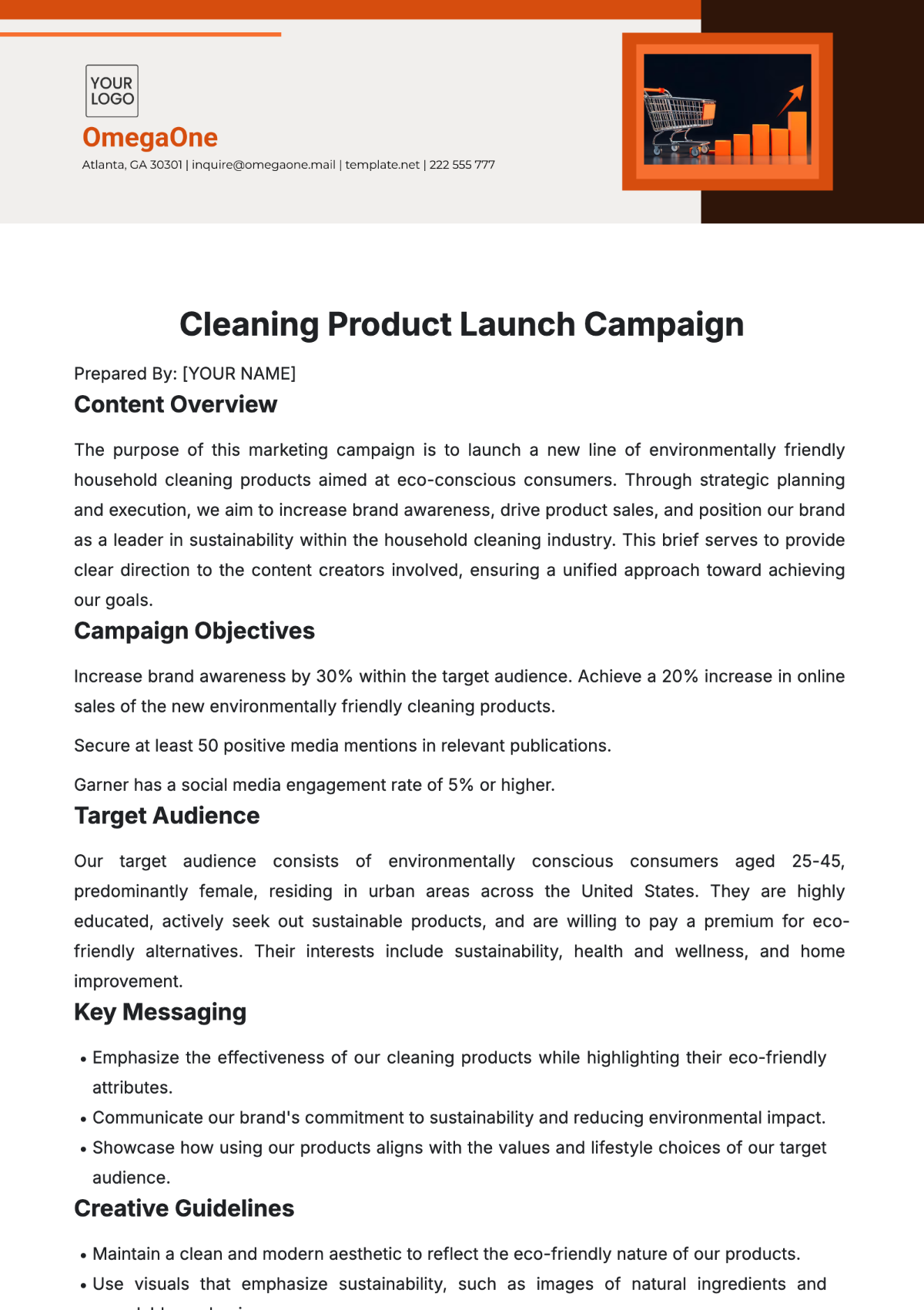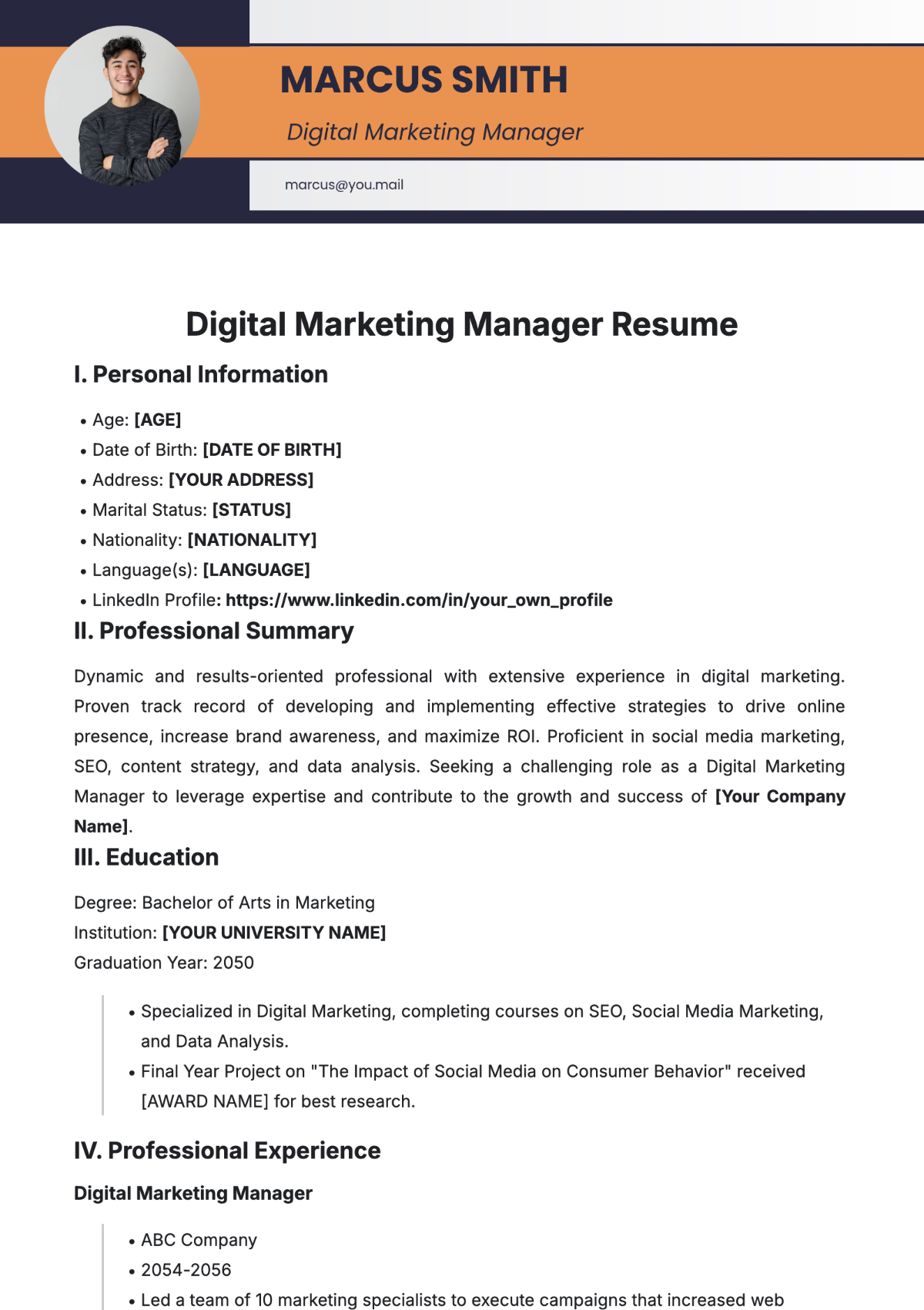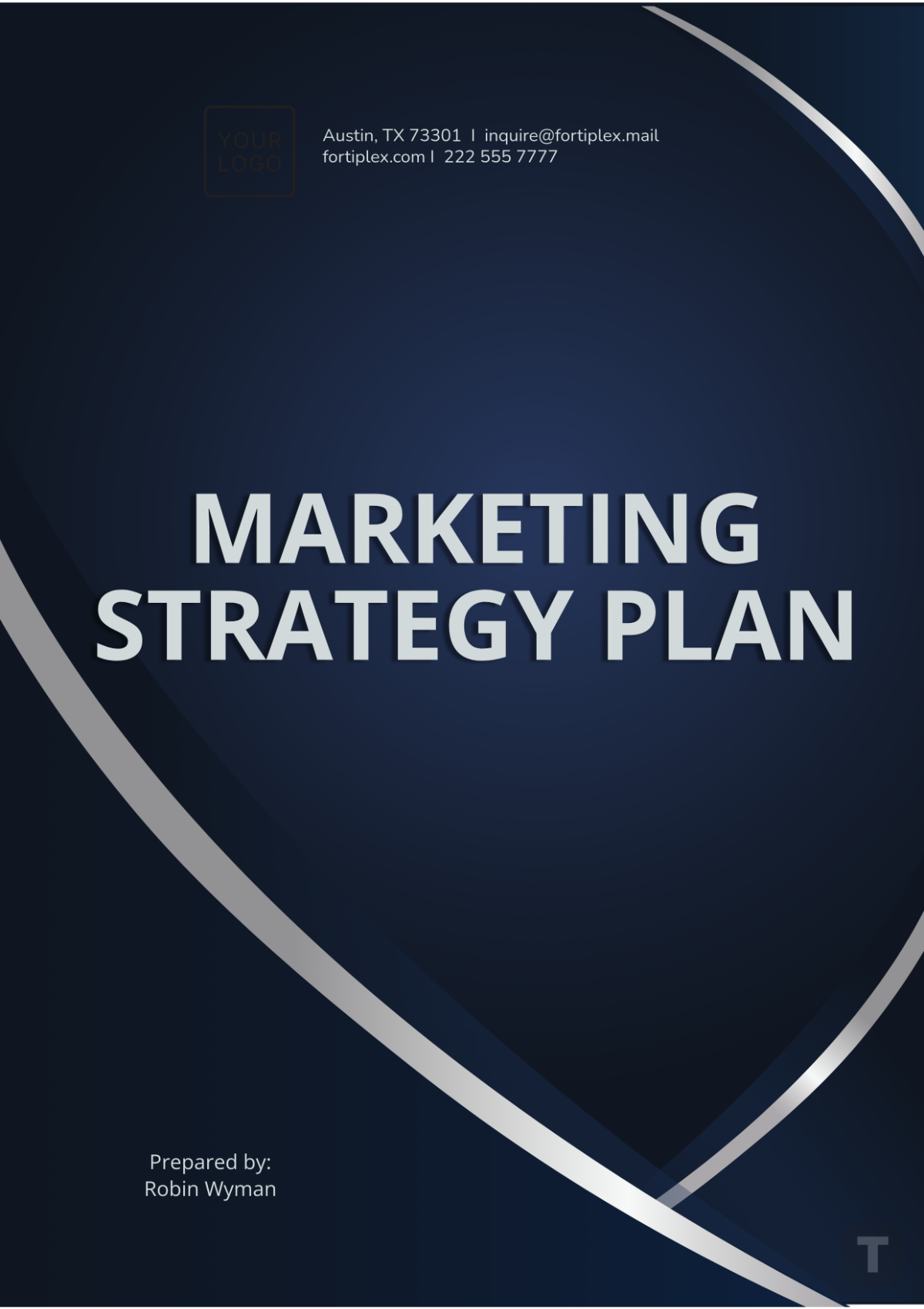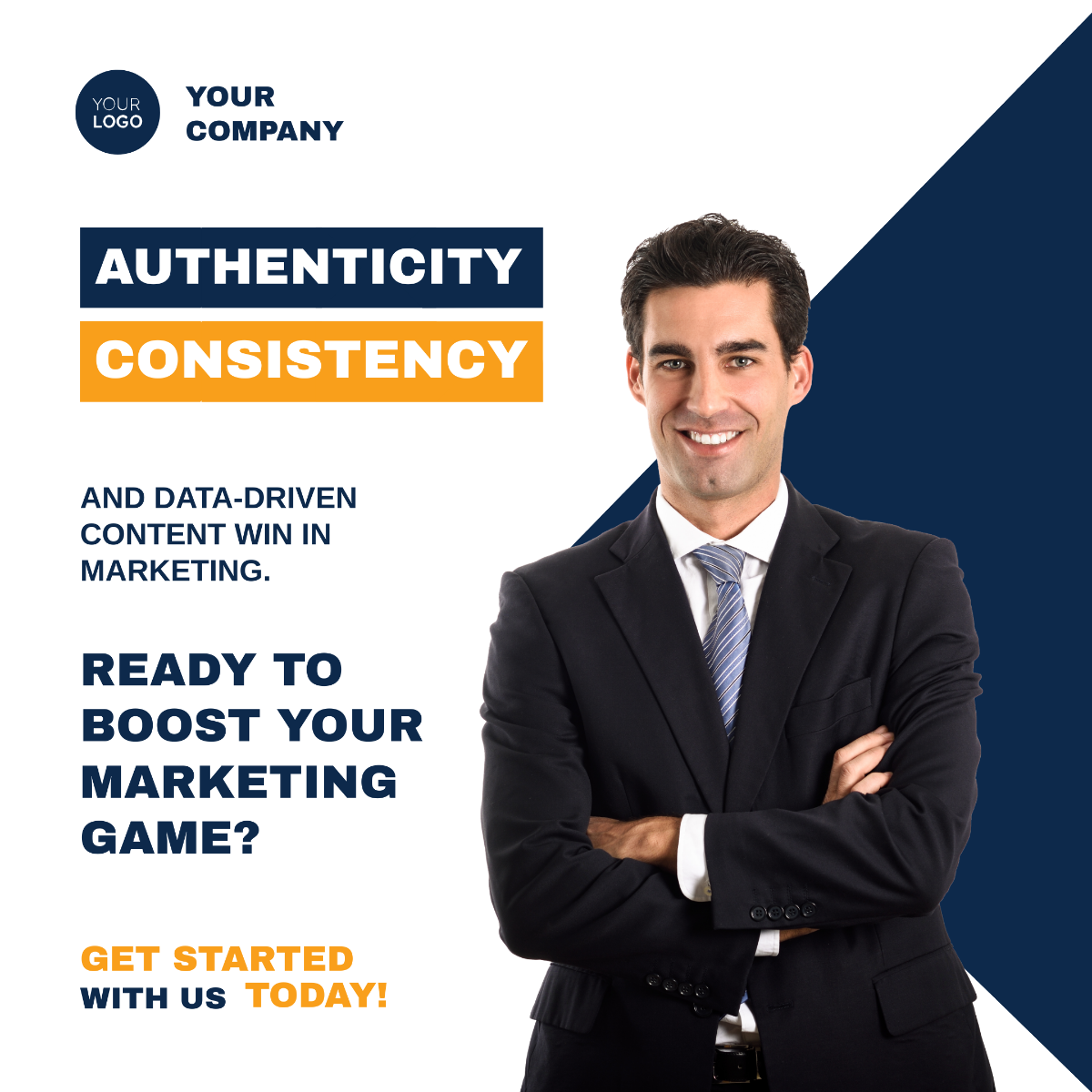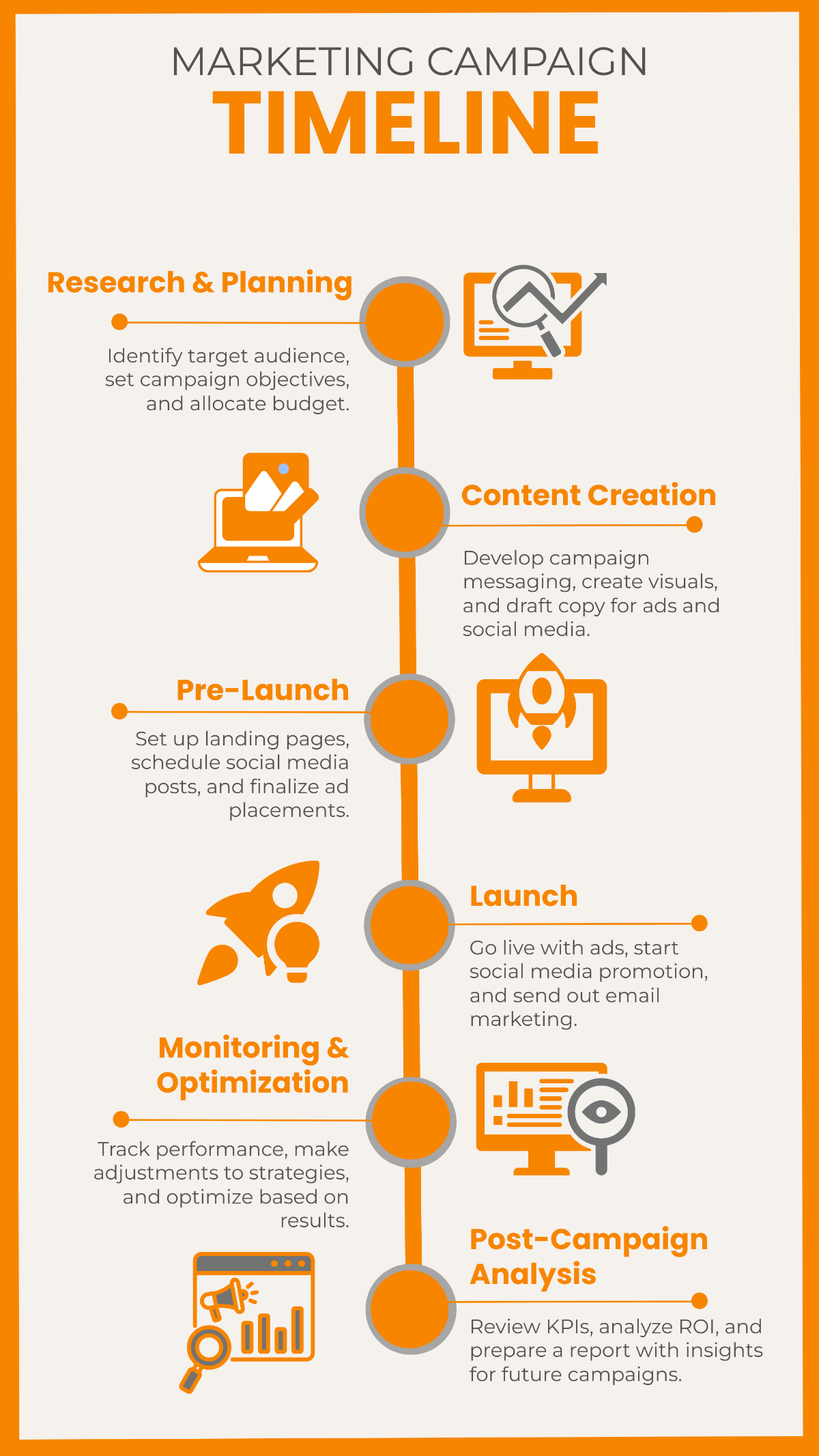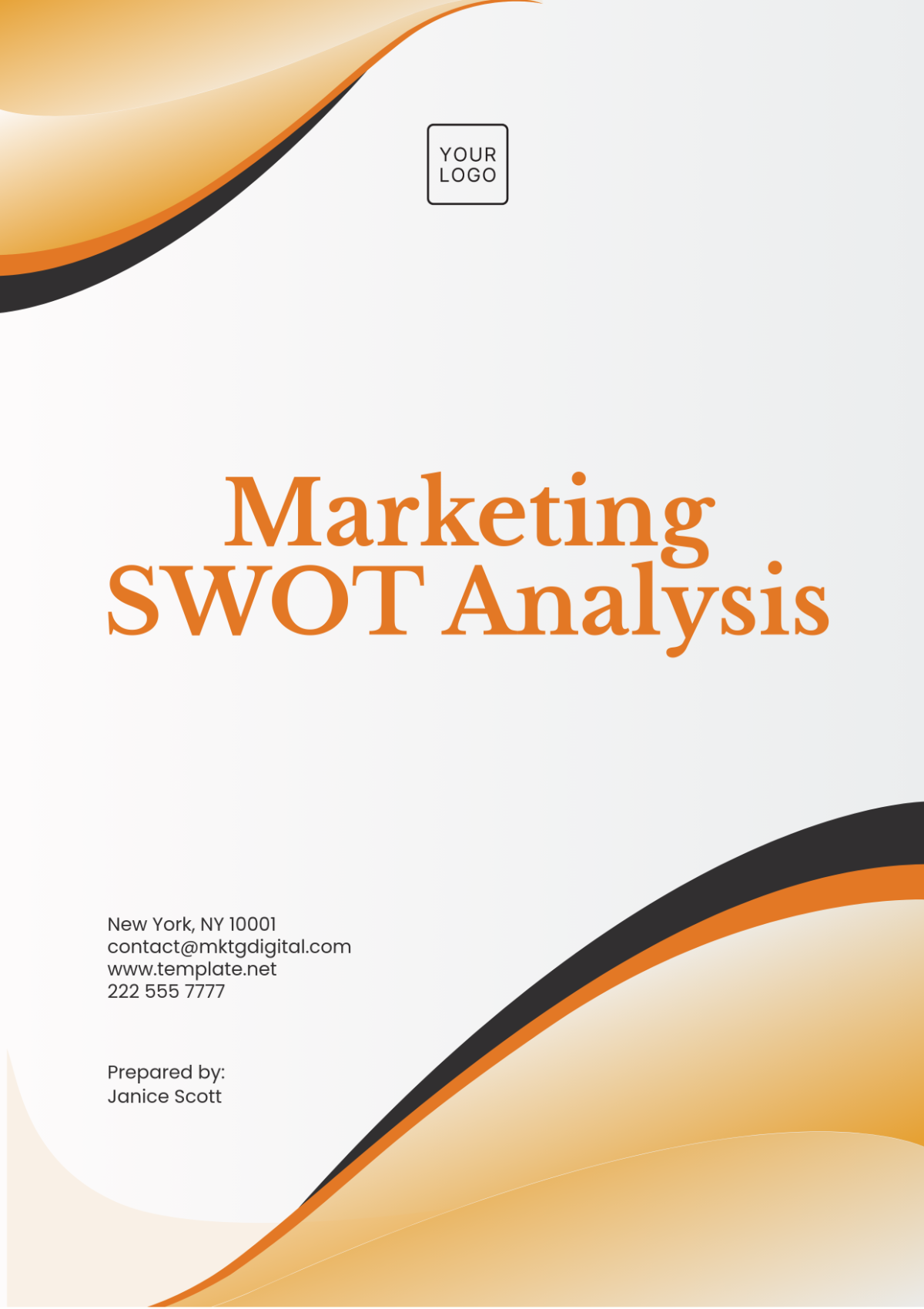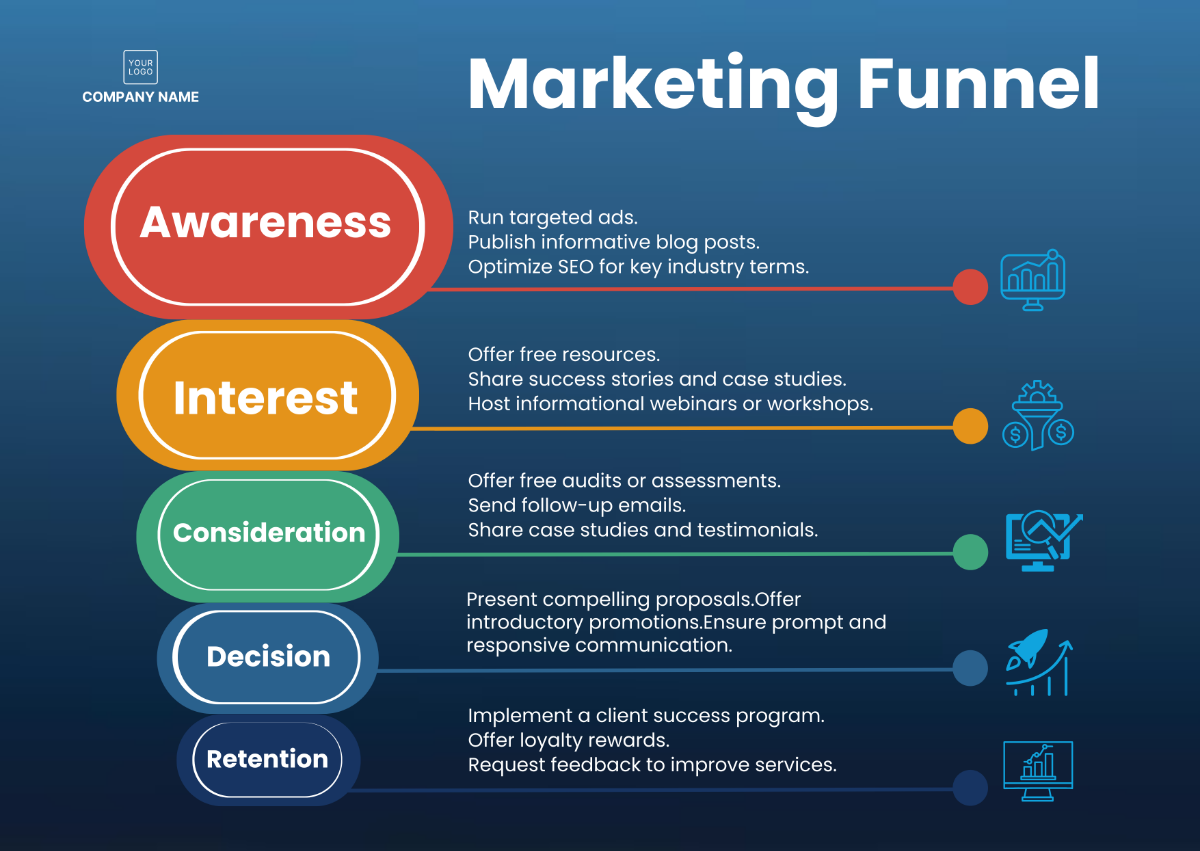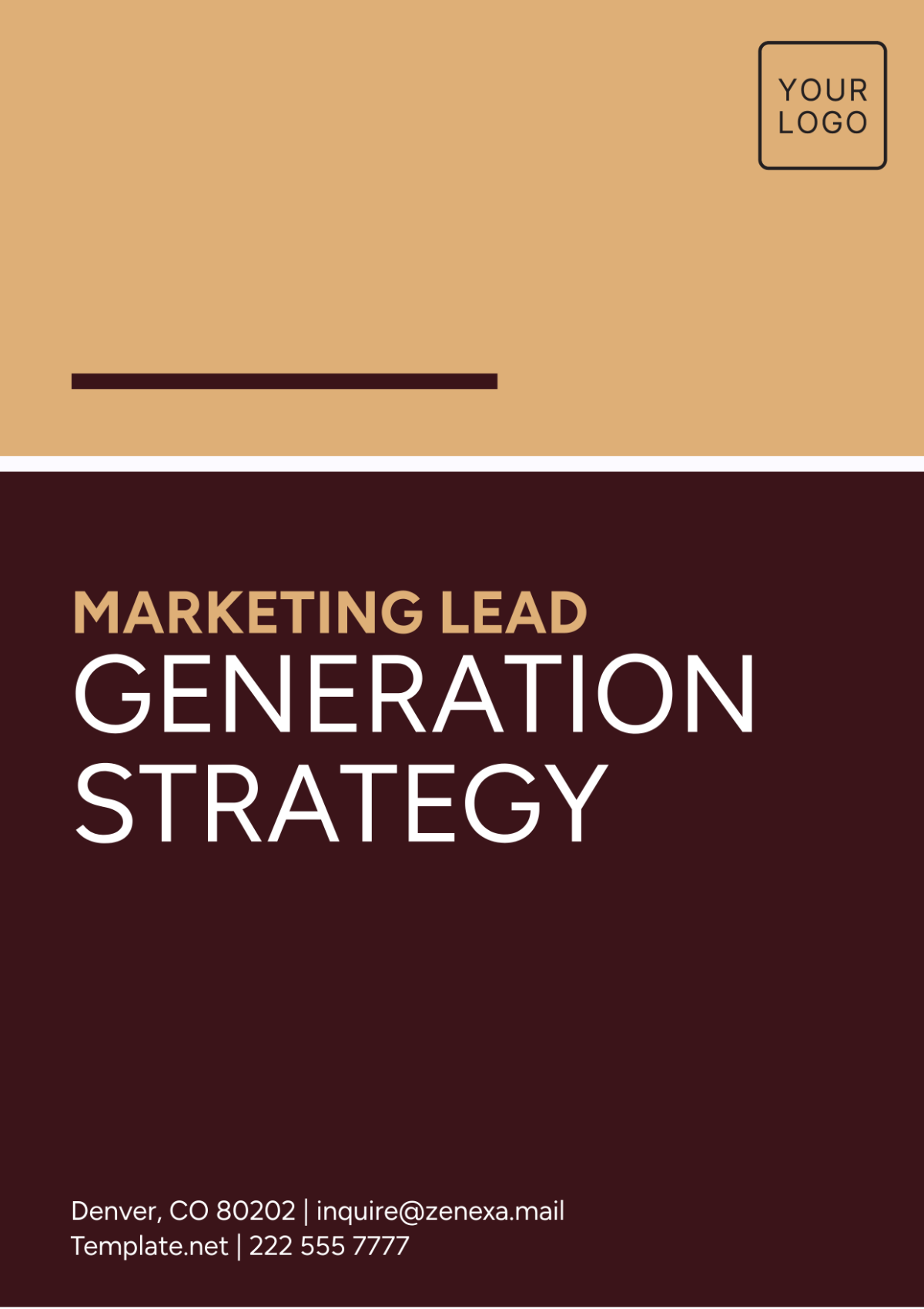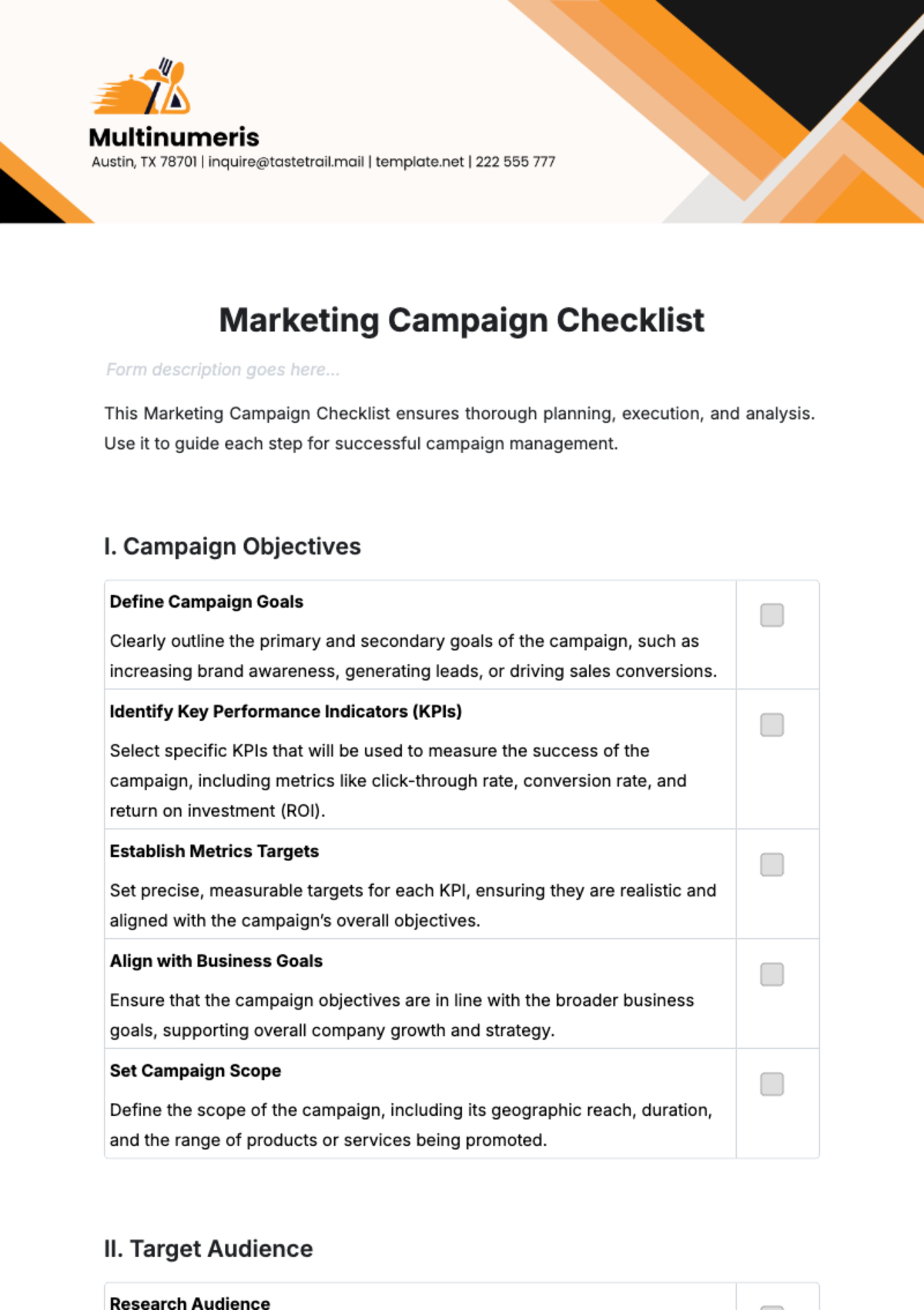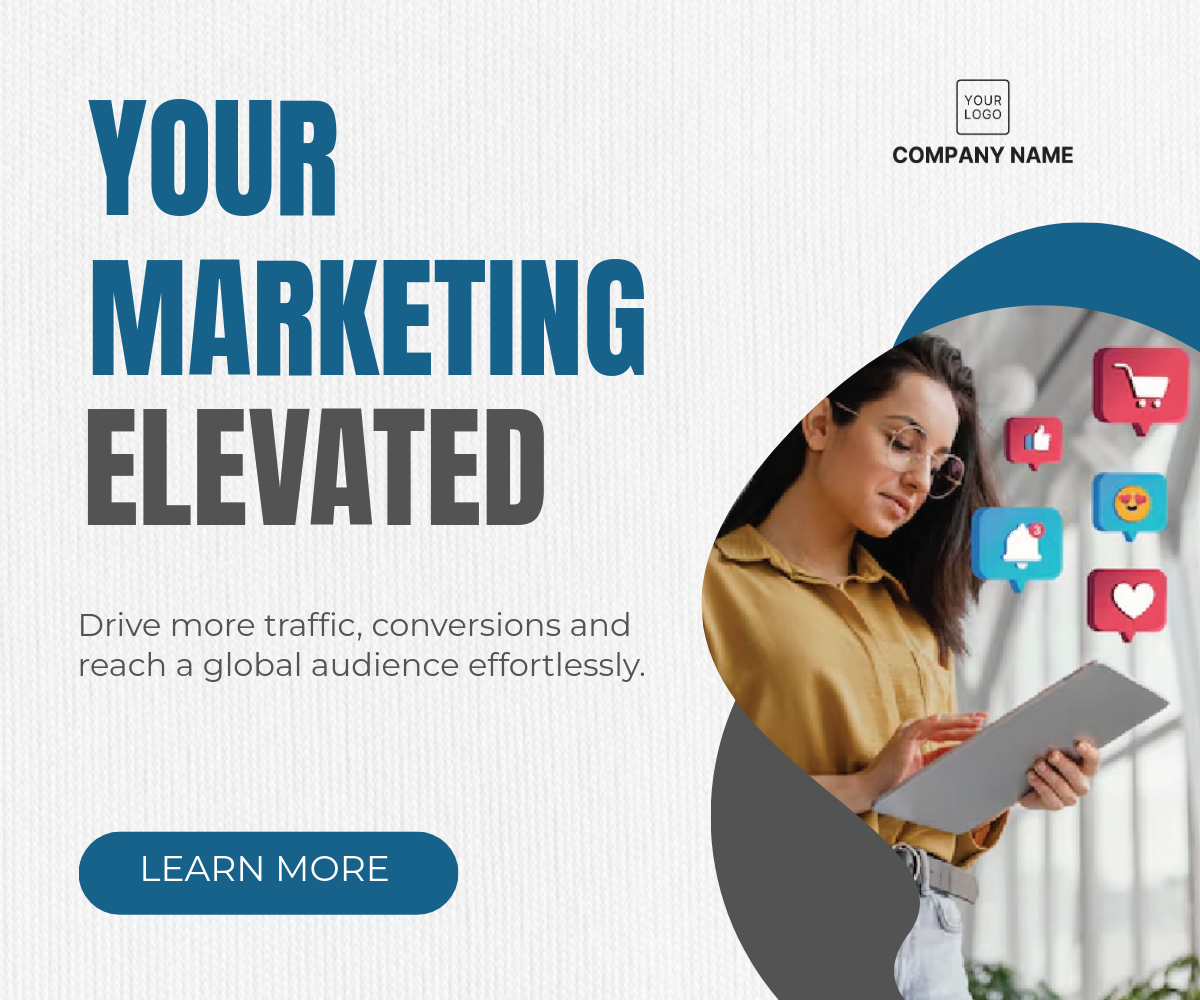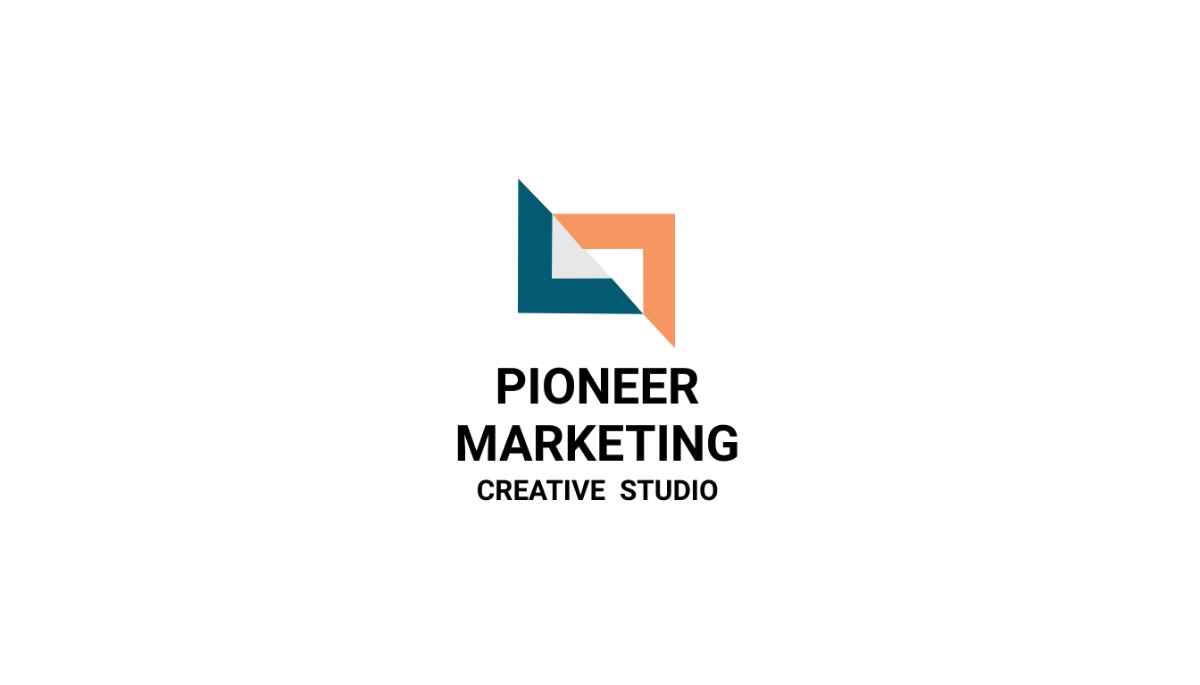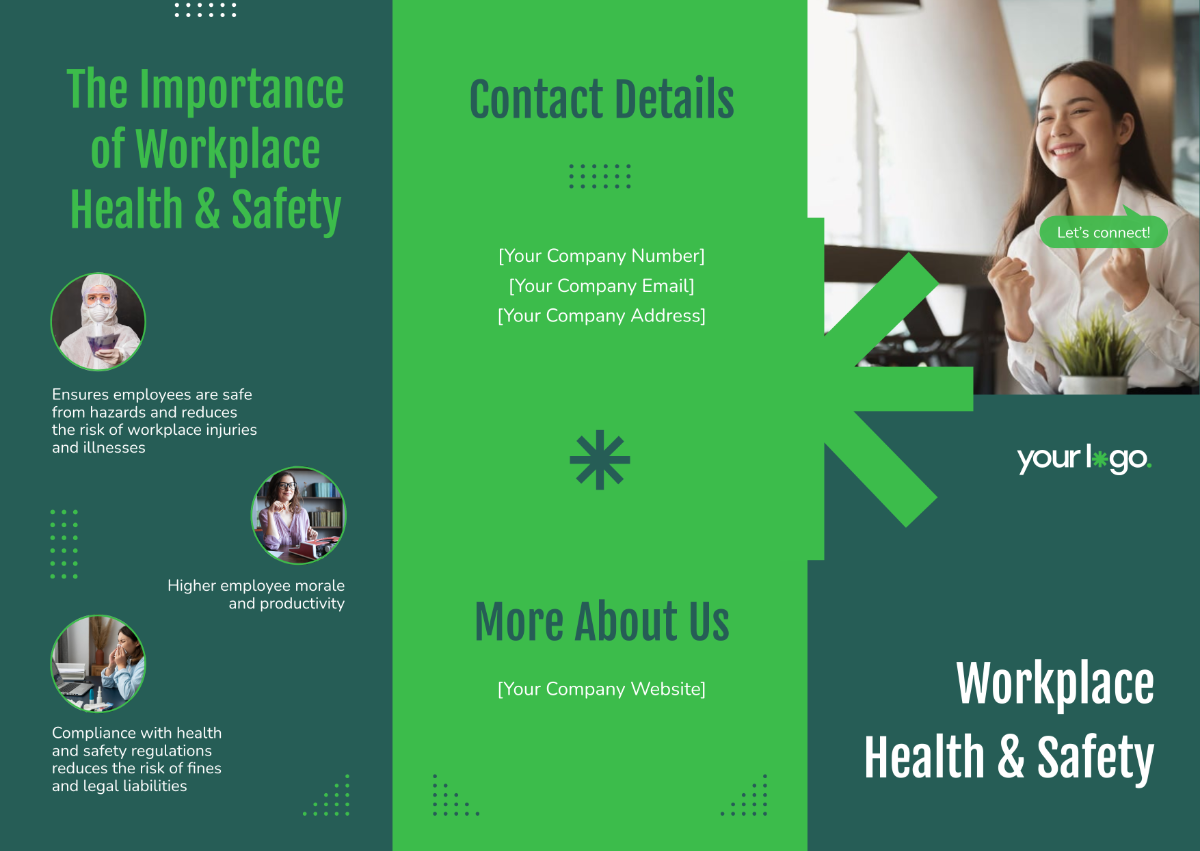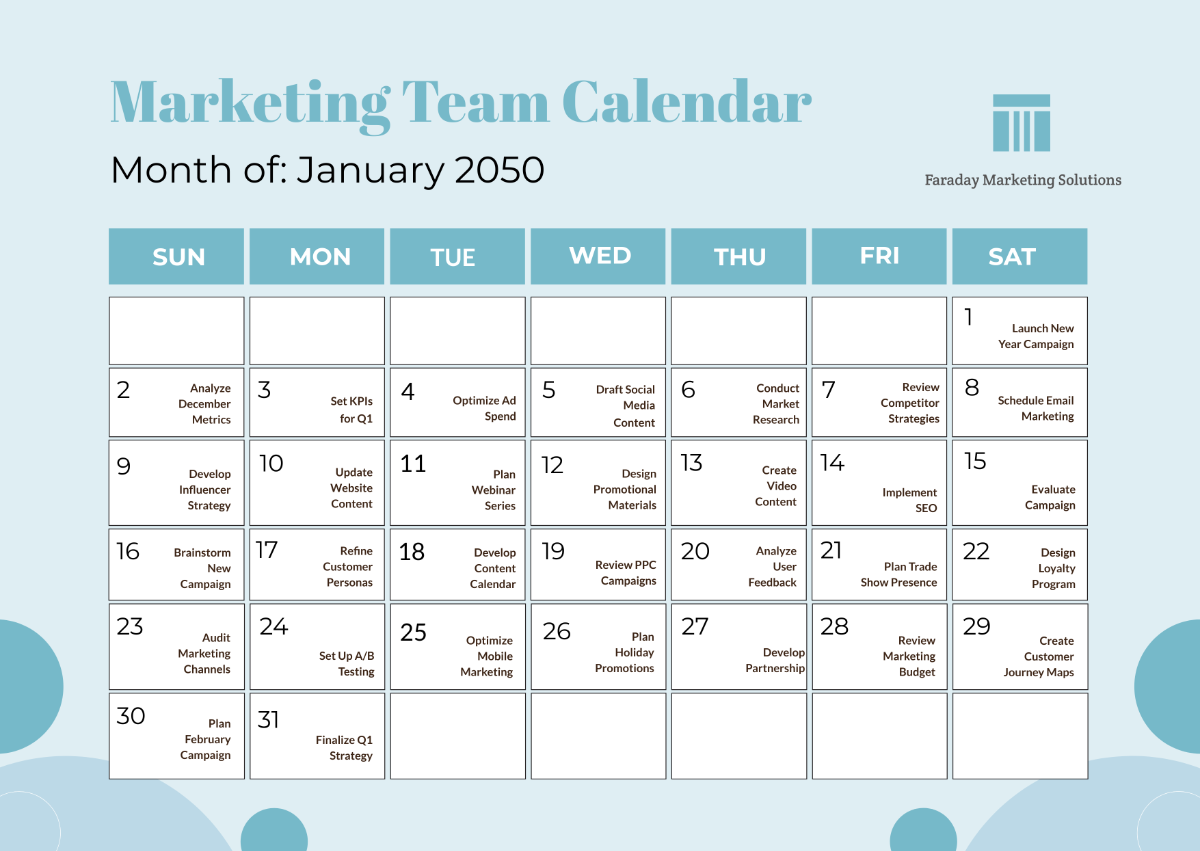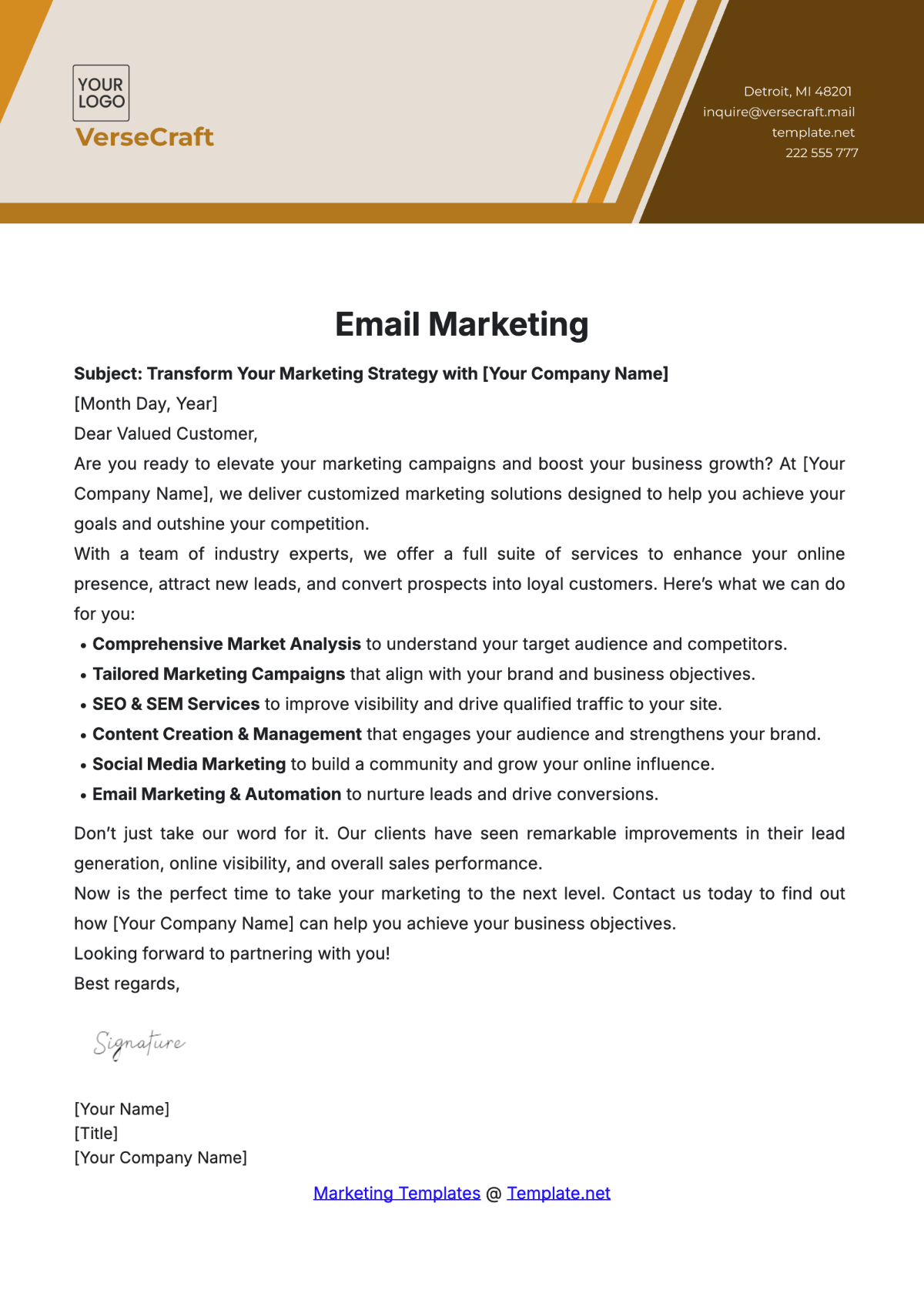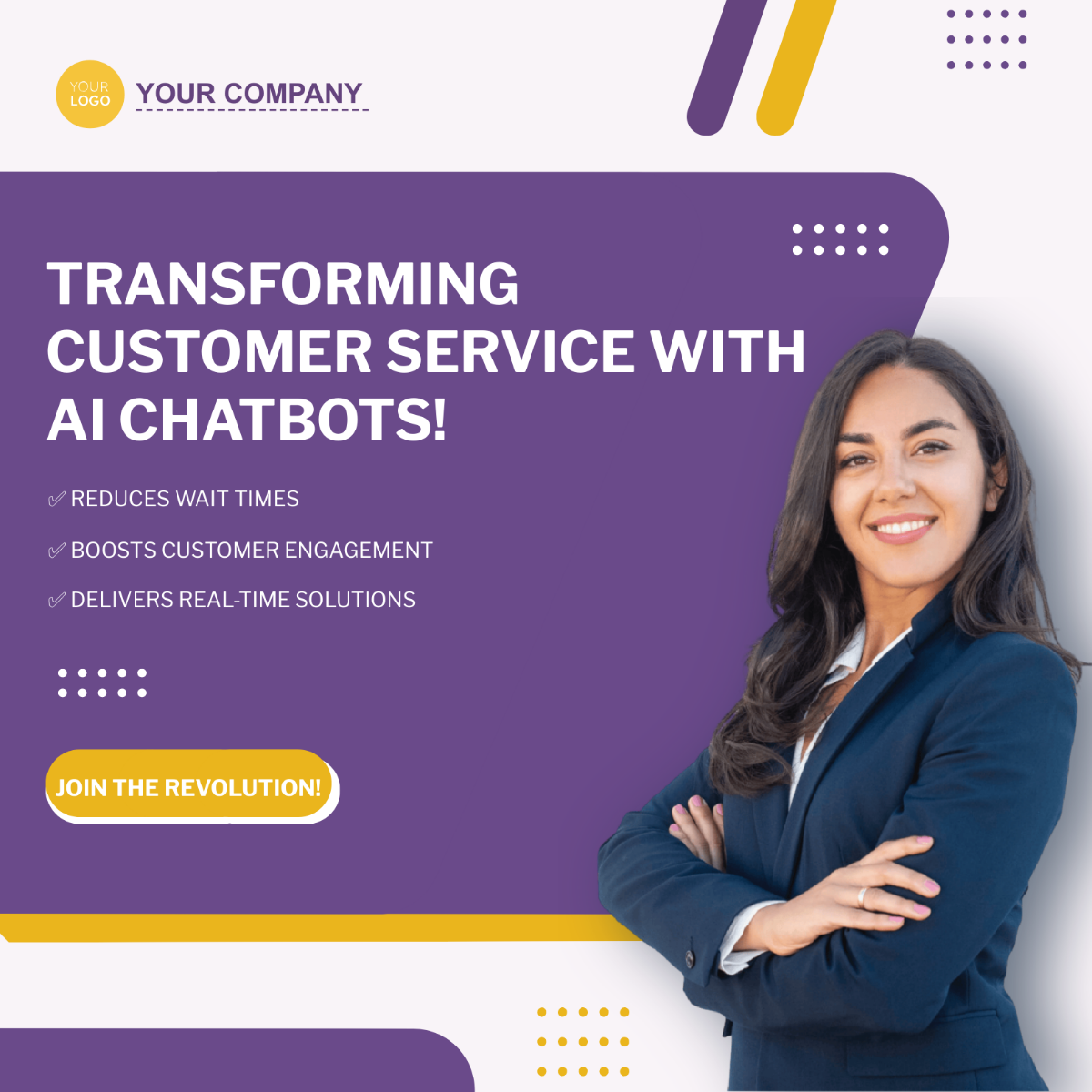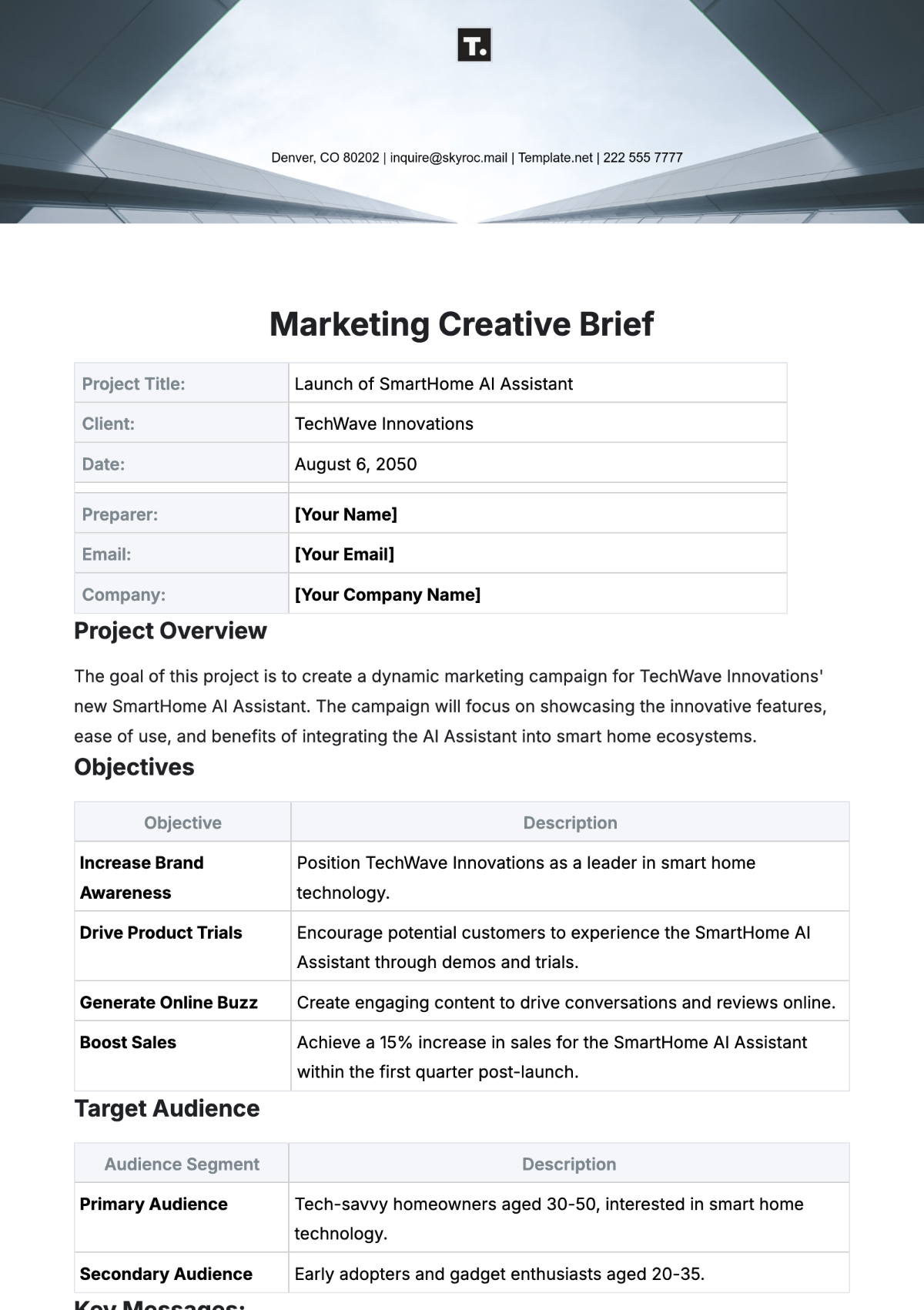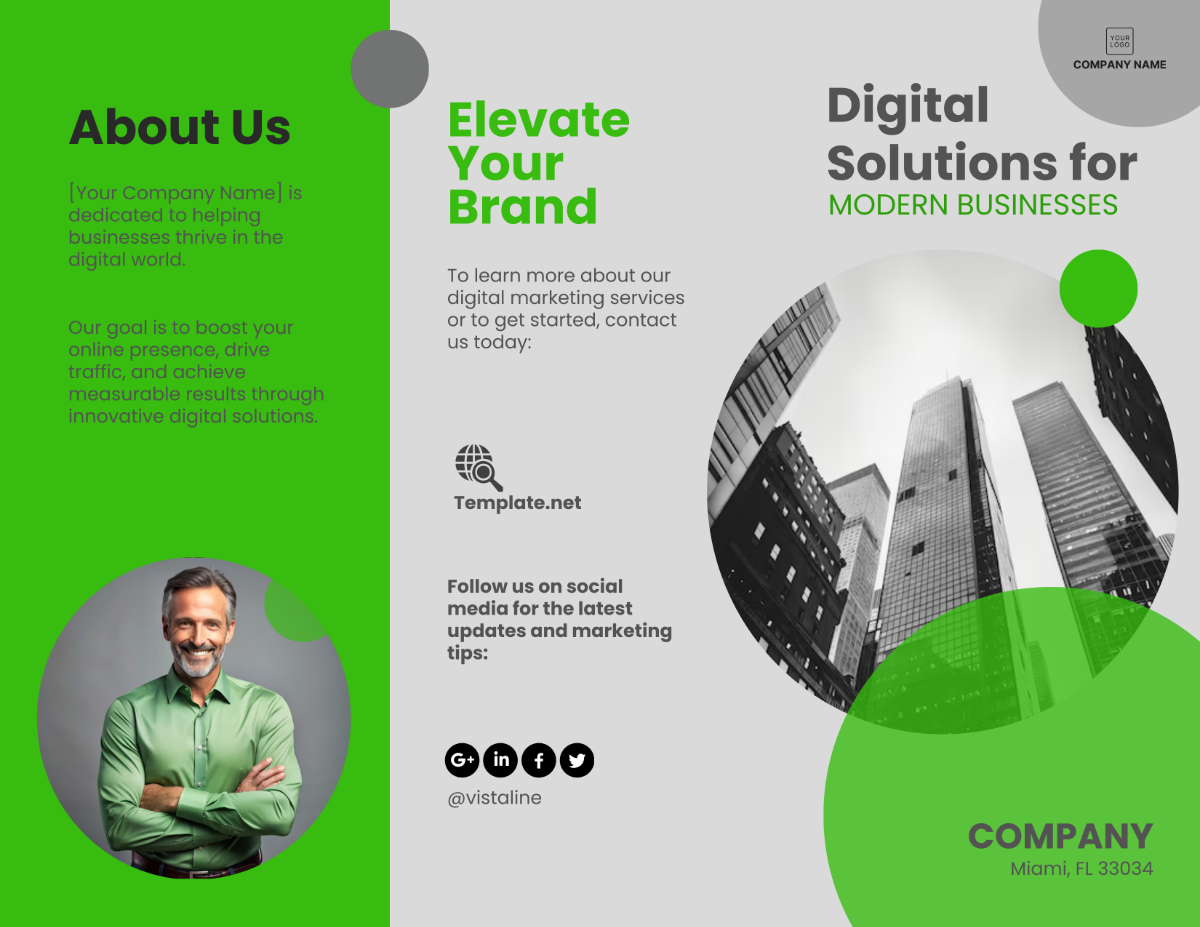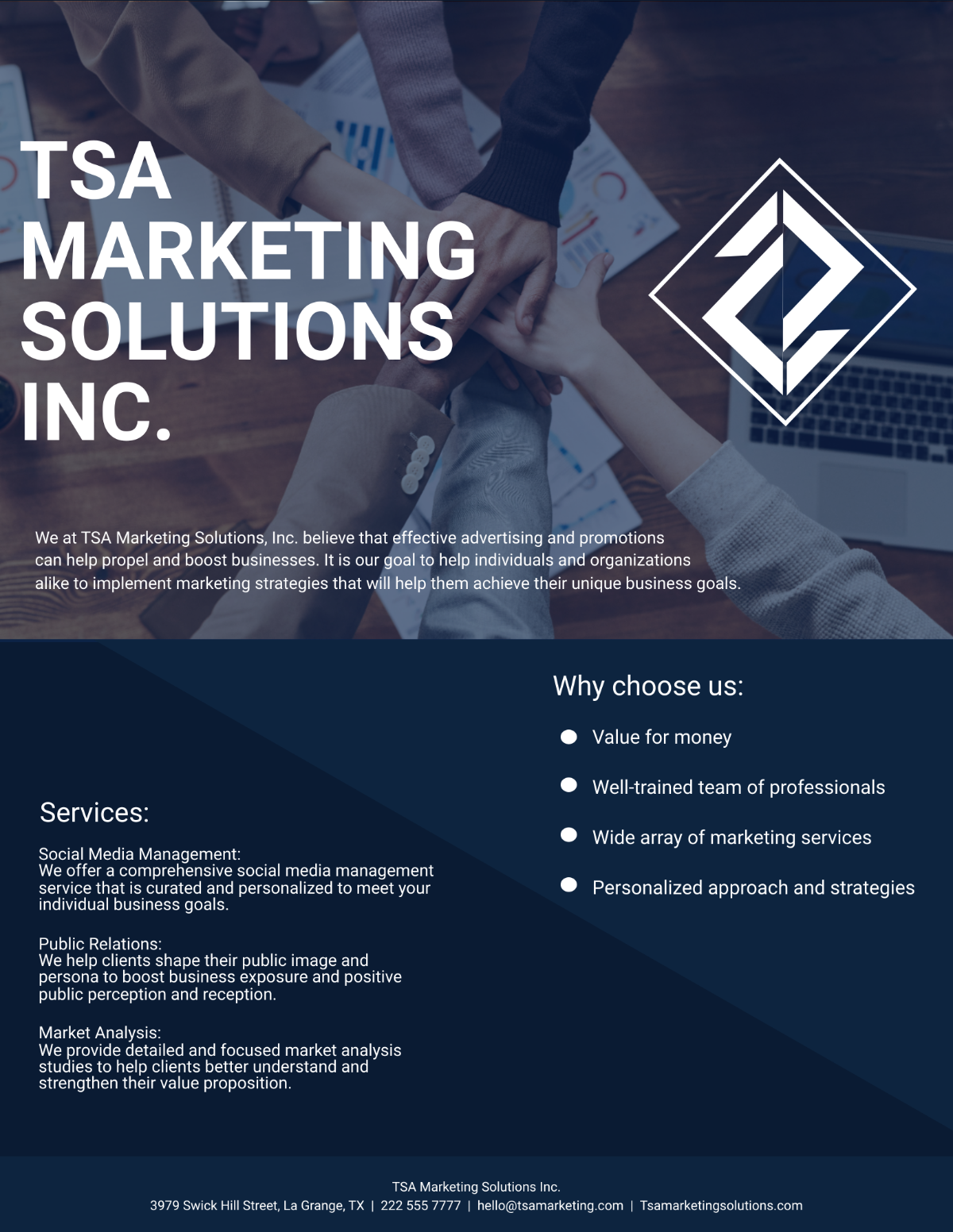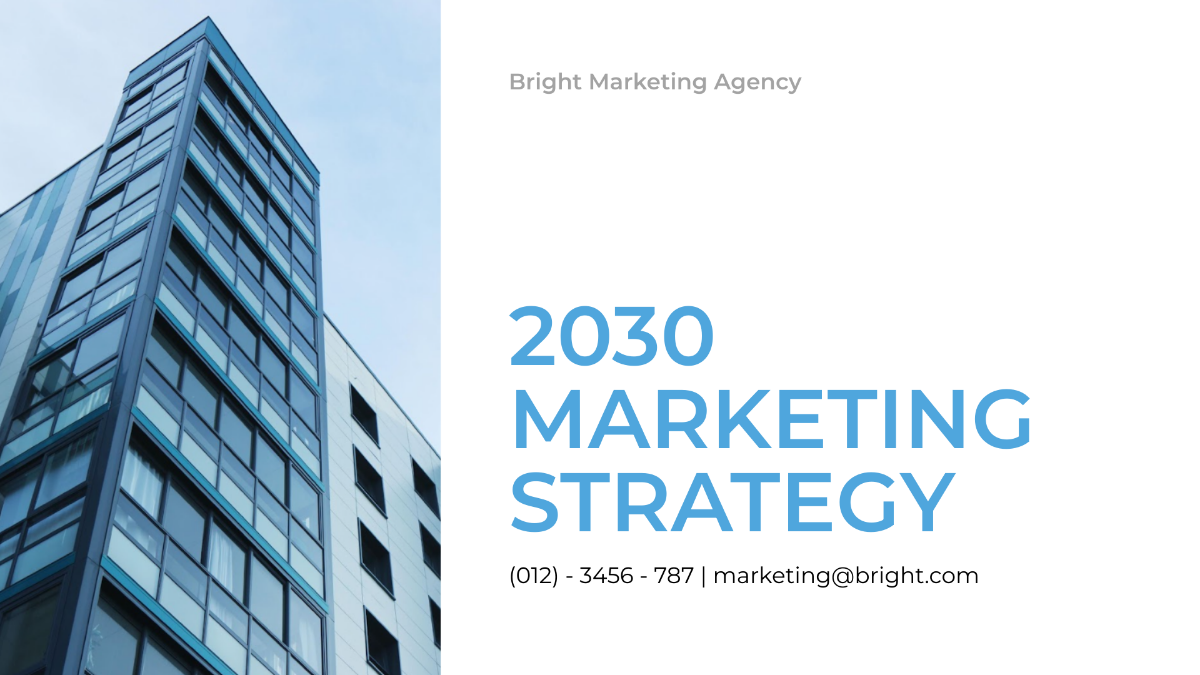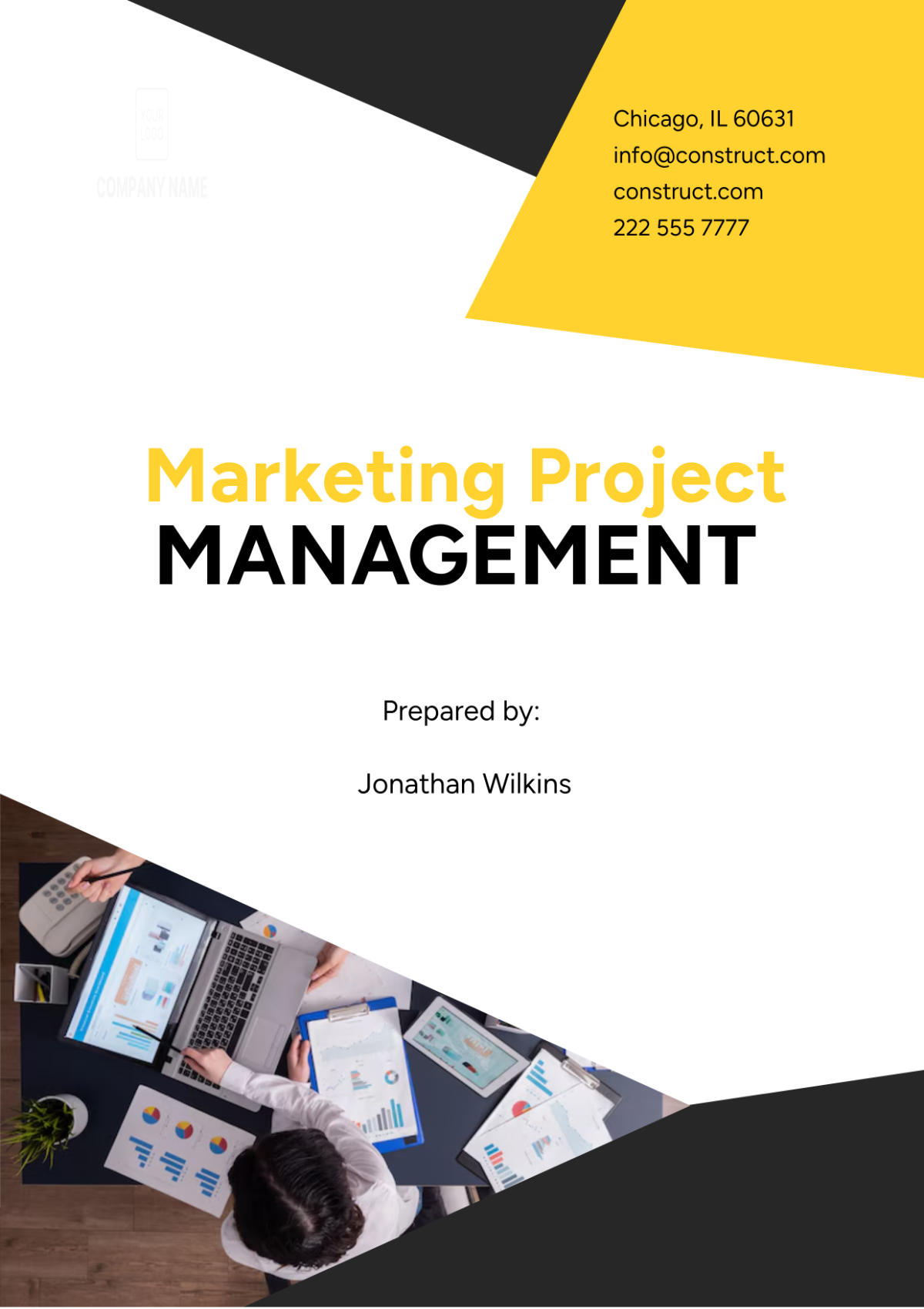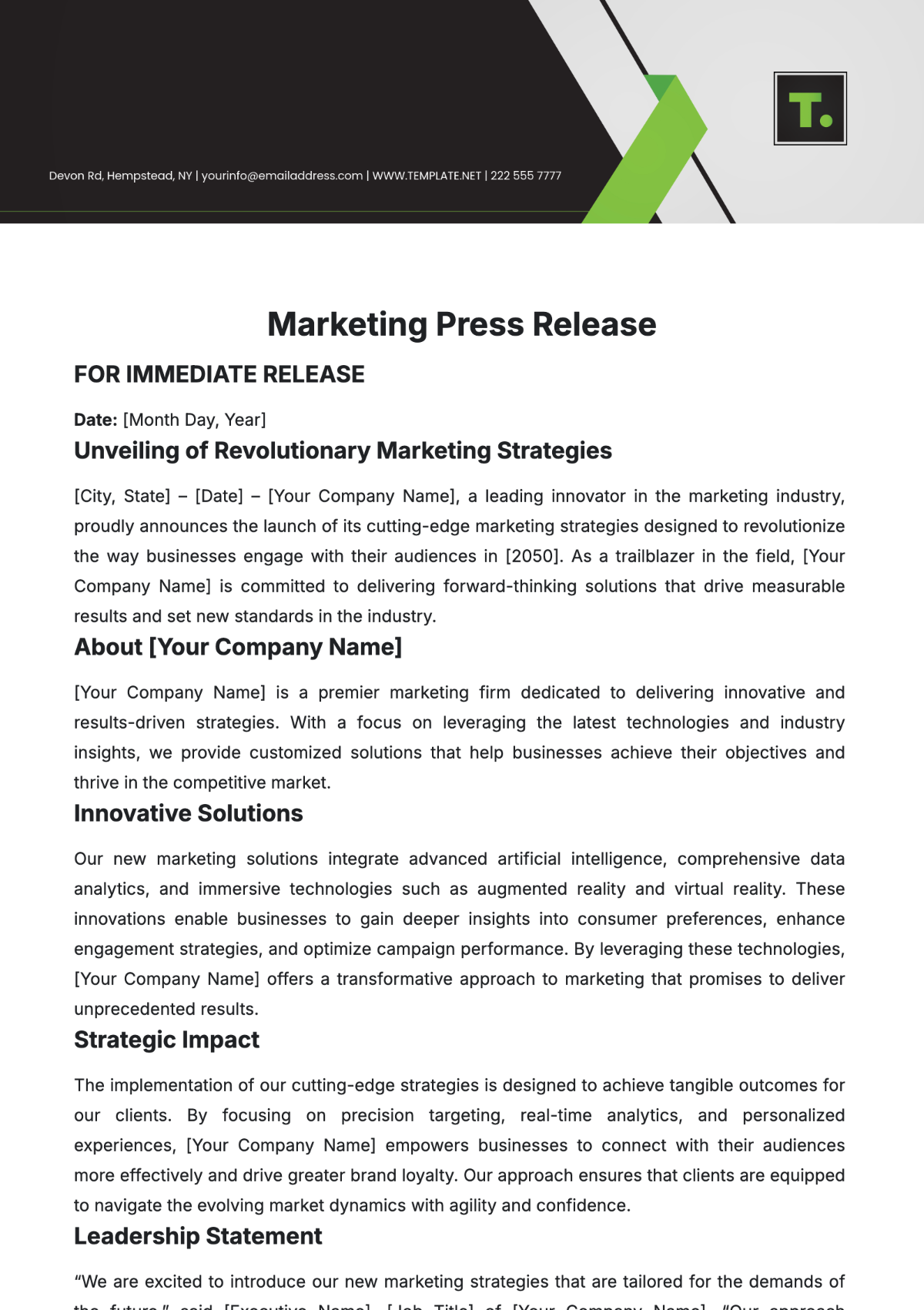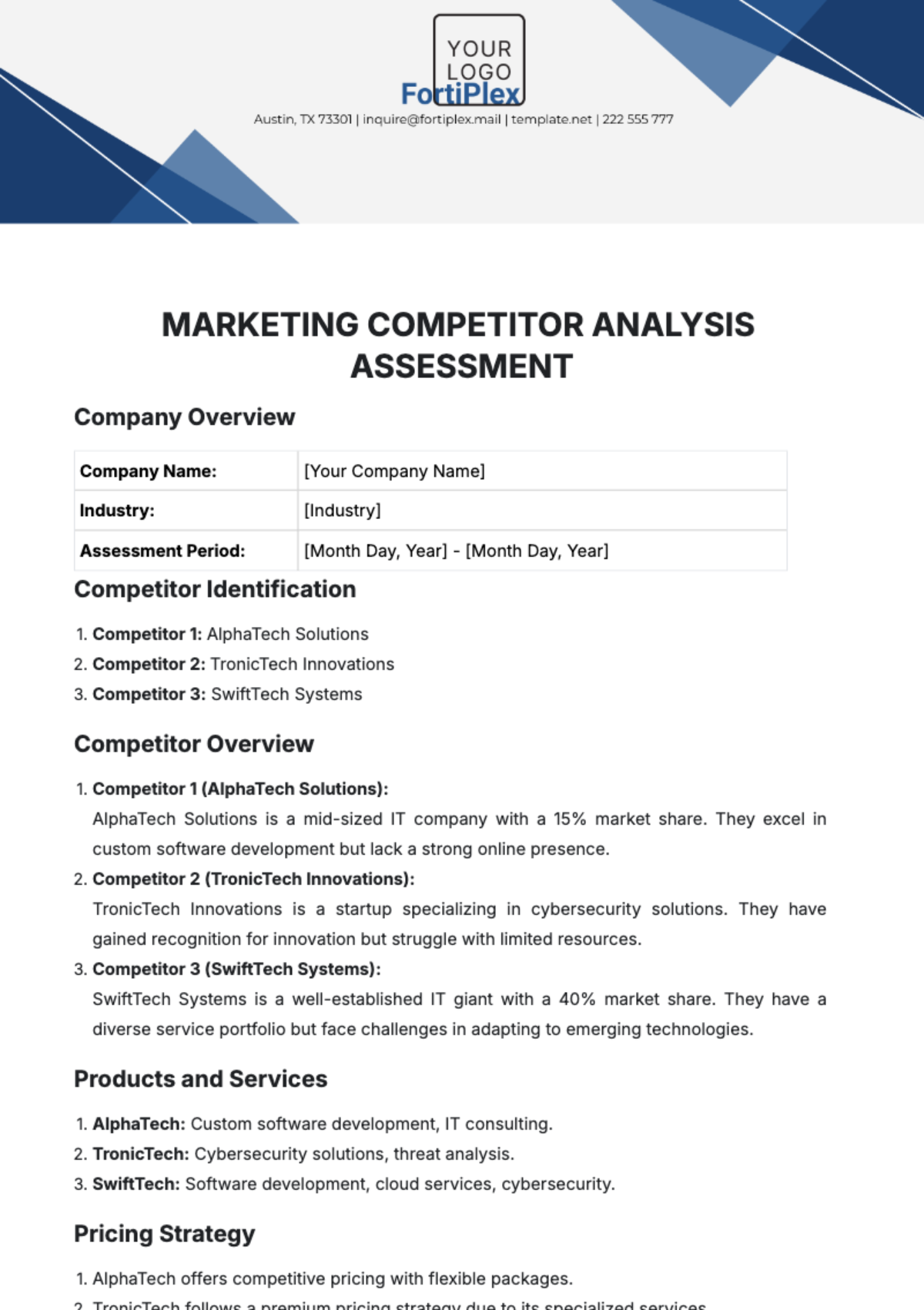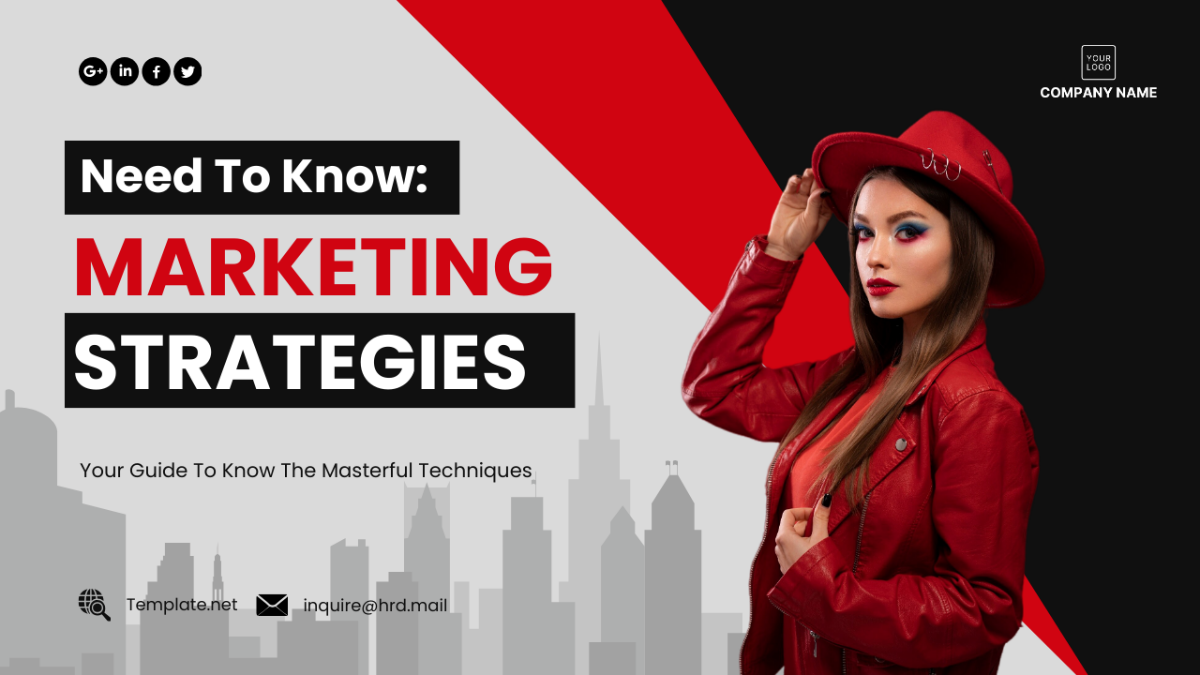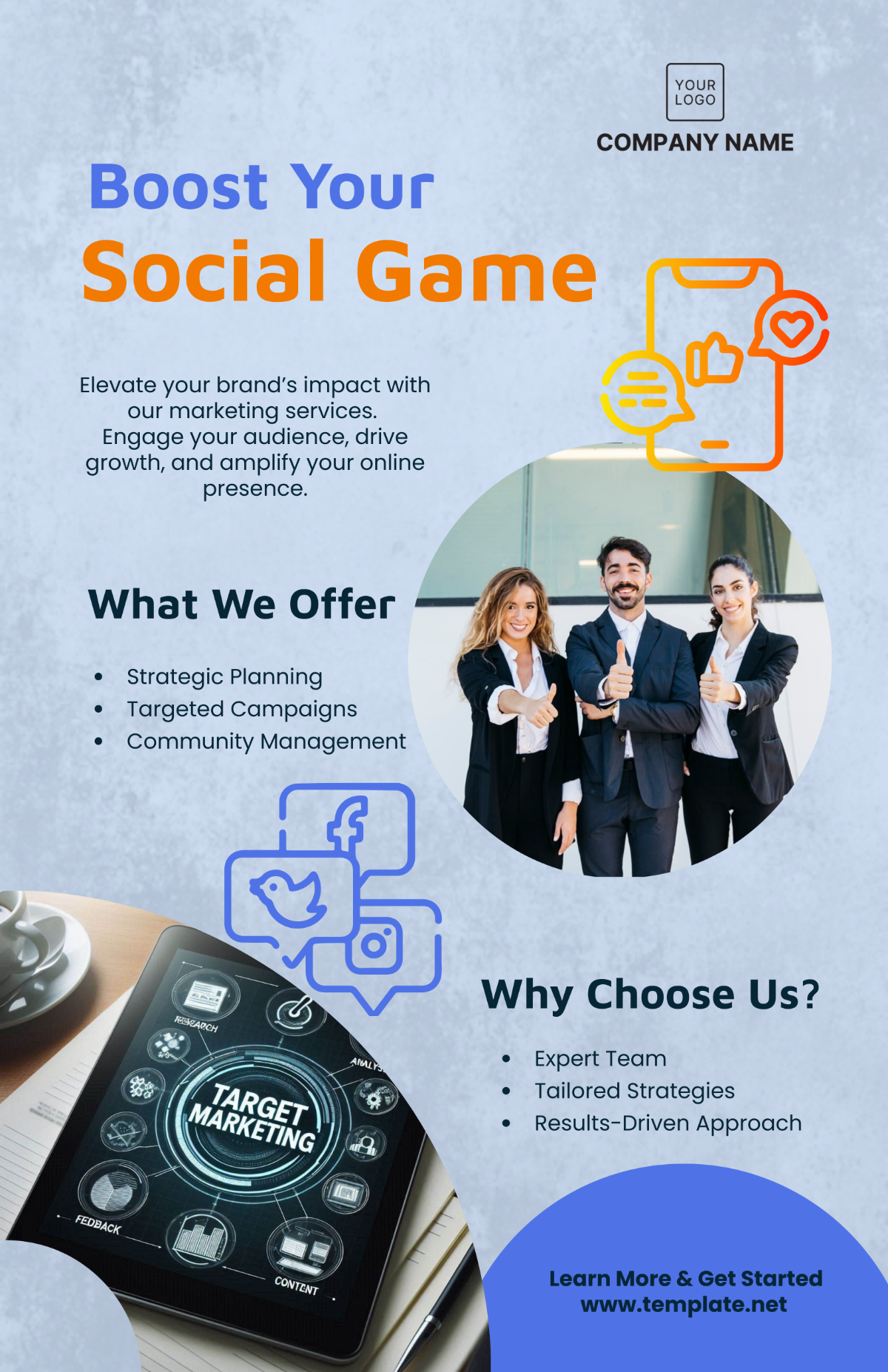Marketing Digital Case Study
1. Executive Summary
This case study aims to provide a concise yet detailed overview of the digital marketing campaign led by [Your Company Name] for [Client Name], a significant player in the [Industry] sector. At the heart of this case study is an examination of how the agency adeptly leveraged an integrated digital marketing approach—combining Search Engine Optimization (SEO), Social Media Marketing, and Pay-Per-Click (PPC) advertising—to solve key challenges faced by the client. The campaign was designed to improve online visibility, drive quality website traffic, enhance conversion rates, and ultimately, increase the return on investment (ROI) for [Client Name]. Notably, the campaign didn't just meet the pre-defined objectives; it surpassed them, proving the efficacy of a well-coordinated, multi-channel marketing strategy.
The key performance metrics for the campaign, including ROI, conversion rate, and web traffic, all exceeded their respective targets. These results underscore [Your Company Name]'s capability in delivering comprehensive and effective digital marketing solutions that drive tangible business outcomes. This summary serves as a snapshot of the campaign's success and paves the way for a detailed exploration of the strategies employed, the challenges met, and the lessons learned in the subsequent sections of this case study.
2. Company Overview
[Your Company Name], established in [Year], is a comprehensive digital marketing agency headquartered in [Location]. Our core competencies lie in Search Engine Optimization (SEO), Social Media Marketing, and Online Advertising, with a focus on delivering high-impact solutions that drive measurable results for our clients. With a team of seasoned professionals comprising strategists, SEO specialists, social media managers, and digital advertisers, we pride ourselves on being a one-stop solution for all digital marketing needs.
Our mission is to help businesses amplify their online presence, increase brand awareness, and achieve optimal ROI through data-driven strategies tailored to the unique challenges and opportunities faced by each client. Over the years, we have built a robust portfolio of successful campaigns across multiple industries, including retail, healthcare, technology, and finance, to name a few. This rich experience enables us to approach every project with a deep understanding of market trends, customer behaviors, and emerging technologies, thus ensuring that our campaigns are not only innovative but also aligned with industry best practices.
By focusing on results, leveraging cutting-edge tools, and fostering a culture of continuous learning and innovation, [Your Company Name] has garnered a reputation for excellence and reliability in the rapidly evolving digital marketing landscape.
3. The Challenge
[Client Name] faced significant challenges with its online presence, notably poor website visibility and disappointing conversion rates. Despite investing in digital marketing, the return on investment (ROI) remained subpar, severely affecting the company's growth prospects. In essence, the digital footprint of the business was almost negligible; it was lost in the noise of a crowded online marketplace, unable to attract or engage potential customers effectively.
The lack of visibility translated directly into inadequate lead generation, causing a ripple effect throughout the sales funnel. Not only did this stagnate revenue, but it also put increased pressure on other, offline channels to perform, creating an unsustainable business model. The situation called for a comprehensive digital marketing strategy capable of achieving multiple objectives: boosting the website’s search engine rankings, improving user engagement, and, most importantly, converting web traffic into qualified leads and ultimately into paying customers. The overarching goal was to maximize ROI by turning the website from a mere digital brochure into a robust sales engine. In the face of stiff competition and rapidly evolving market dynamics, [Client Name] needed a game-changing solution to revitalize its digital marketing strategy and achieve sustainable growth.
4. Objectives & Goals
This section aims to quantify the campaign's specific targets and measure them against the actual results. By setting these benchmarks at the outset, both [Your Company Name] and [Client Name] could monitor the performance in real-time and make data-driven decisions. Achieving or exceeding these targets would not only validate the effectiveness of the marketing strategies employed but also provide valuable insights for future campaigns. The table below delineates the objectives, the predetermined targets, and the actual results attained at the end of the campaign period.
Objectives | Target | Actual Results |
|---|---|---|
Increase Website Traffic | 30% | 40% |
Improve Conversion Rate | 5% | 6.5% |
Boost Online Sales | 20% | 25% |
As illustrated in the table, the campaign was a resounding success. Website traffic saw a remarkable increase of 40%, surpassing the original target of 30%. Furthermore, the conversion rate improvement exceeded expectations, registering at 6.5% against a target of 5%. Lastly, online sales experienced a substantial boost, surpassing the goal by 5 percentage points to clock in at 25%. The outperformance of these key metrics underlines the effectiveness of the strategies implemented and sets a strong foundation for [Client Name]'s future digital marketing endeavors.
5. Target Market
The chapter aims to delineate the specific customer segments that the digital marketing campaign focused on. A well-defined target market is the cornerstone of any successful marketing strategy, as it helps in crafting tailored messages and selecting the most effective channels for outreach. By segmenting the market into primary and secondary categories, [Your Company Name] was able to allocate resources more efficiently and achieve higher conversion rates.
A. Primary Market: Millennials, age 25-35
Millennials form the primary target market for this campaign. This demographic is highly tech-savvy, values online interactions, and is more likely to engage with brands through digital platforms. To appeal to this group, [Your Company Name] utilized social media advertising heavily, with a focus on platforms popular among this age group like Instagram and Twitter. Content was designed to be visually appealing and resonate with millennial values, such as sustainability and social responsibility. The success of targeting this group was evident in the 40% increase in website traffic, much of which was attributed to users in the 25-35 age range.
B. Secondary Market: Professionals, age 36-50
The secondary target market comprises professionals aged 36-50. This group, while not as digitally native as millennials, is still proficient in online navigation and values efficiency and reliability. LinkedIn and industry-specific forums were the primary channels used to engage this segment. The messaging here was tailored to emphasize the professional and reliable aspects of [Client Name]'s products or services. Email marketing campaigns with more detailed content also proved effective for this demographic, contributing to the 6.5% improvement in conversion rates.
By strategically targeting these two distinct demographics, [Your Company Name] managed to not only meet but exceed the campaign objectives, thereby demonstrating the power of targeted digital marketing.
6. Market Research
Market Research serves to elucidate the methods and key findings that shaped the digital marketing campaign for [Client Name]. Comprehensive market research is instrumental in understanding customer behaviors, preferences, and pain points, which subsequently informs the marketing strategy. For this campaign, [Your Company Name] employed a multi-pronged approach to gather qualitative and quantitative data, including online surveys, focus groups, and analysis of social media metrics.
Methodology:
Online Surveys: Distributed to a diverse yet targeted set of individuals fitting the campaign's primary and secondary target markets, online surveys helped us capture essential metrics like shopping preferences and brand attitudes.
Focus Groups: In-depth discussions with select participants provided nuanced insights into customer behaviors and needs, thereby allowing for a more targeted campaign.
Social Media Analytics: Analysis of user engagement, comments, and sharing patterns on social media platforms provided valuable data on what content resonates with our target audience.
Key Insights:
Insight | Percentage of Respondents |
|---|---|
Prefer online shopping | 65% |
Consider brand loyalty significant | 40% |
Preference for Online Shopping: The data indicated that a significant 65% of respondents prefer online shopping, aligning well with [Client Name]'s focus on boosting its online sales. This insight influenced the decision to allocate more budget to PPC and SEO strategies to capture this online-first audience.
Brand Loyalty: Around 40% of respondents noted that brand loyalty was a significant factor in their purchasing decisions. This informed the content strategy, leading to the creation of value-driven content aimed at building long-term relationships rather than just one-off sales.
The research methodologies and key insights played a pivotal role in formulating a data-driven and focused digital marketing strategy, ensuring that the objectives were not only met but exceeded.
7. Strategy & Implementation
This chapter outlines the specific strategies and implementation methods that [Your Company Name] employed to achieve the campaign's objectives for [Client Name]. A multi-faceted approach was adopted, focusing on Search Engine Optimization (SEO), Social Media Marketing, and Pay-Per-Click (PPC) advertising. Below is a table summarizing the key action points under each strategy component:
Strategy Component | Strategy Component | Tools Used | Responsible Team | Implementation Timeline |
|---|---|---|---|---|
SEO | Keyword analysis, On-page optimization | Google Keyword Planner | SEO Team | Q1 - Q4 |
Social Media | Content calendar, Influencer partnerships | Facebook Ads Manager | Social Media Team | Q1 - Q4 |
PPC Campaign | Keyword targeting, Bid strategy | Google Ads | PPC Team | Q2 - Q4 |
8. Results
The "Results" chapter provides an in-depth analysis of the outcomes achieved through the comprehensive digital marketing campaign orchestrated by [Your Company Name] for [Client Name]. This section aims to highlight how well the campaign performed against the initial objectives and KPIs set forth in the planning phase. A quantitative evaluation is essential for measuring the campaign's effectiveness and provides actionable insights that can inform future marketing strategies. Below is a table that offers a side-by-side comparison of the targets and actual results for key metrics.
Metrics | Target | Achieved |
|---|---|---|
ROI | 20% | 25% |
Conversion Rate | 5% | 6.5% |
Website Traffic | Increase by 30% | Increased by 40% |
Return on Investment (ROI): We aimed for an ROI of 20% but were able to surpass this target, achieving an ROI of 25%. This demonstrates that the strategic decisions made throughout the campaign were financially beneficial and yielded a better return than anticipated.
Conversion Rate: The target for the conversion rate was set at 5%, and we successfully outperformed this by achieving a conversion rate of 6.5%. This increase signifies that not only were we able to drive more traffic to the website but also convert a higher percentage of visitors into customers, thereby confirming the effectiveness of our landing page and sales funnel strategies.
Website Traffic: Our objective was to increase website traffic by 30%, and the actual result came in significantly higher at a 40% increase. This indicates that our SEO and PPC strategies were effective in drawing more users to the site, resulting in improved visibility and greater opportunities for conversion.
In summary, the campaign successfully met and exceeded all set targets, providing a robust foundation for [Client Name] to continue its digital marketing efforts and for [Your Company Name] to refine and optimize future campaigns.
9. Lessons Learned
This section outlines some of the key takeaways from the digital marketing campaign. These lessons provide valuable insights into what worked well and what could be improved upon for future campaigns.
A. PPC Campaign: Highest-Performing Channel for ROI
The Pay-Per-Click (PPC) advertising campaign was identified as the highest-performing channel in terms of Return on Investment (ROI). This suggests that the keyword targeting, bid strategies, and landing page optimizations were highly effective. This immediate impact of PPC on ROI establishes it as an indispensable tool for short-term goals and immediate revenue generation. Future campaigns may allocate more budget to PPC initiatives to maximize ROI.
B. SEO Initiatives: Slow but Steady Long-Term Performance
While Search Engine Optimization (SEO) did not yield immediate results, its significance in enhancing long-term website visibility and organic traffic cannot be understated. The effort invested in keyword analysis, on-page optimization, and backlinking strategy will likely pay off over a more extended period, increasing organic reach and potential for higher conversions. SEO remains a cornerstone for sustained online growth and should be continually optimized for long-term success.
C. Social Media: Effective for Brand Building but Less for Immediate Conversions
Social media platforms showed their effectiveness in building brand awareness and engaging with the audience but were less effective in driving immediate conversions. This finding implies that while social media is invaluable for cultivating brand loyalty and customer engagement, it may not be the best channel for achieving quick sales. However, it’s crucial to recognize the long-term benefits of a strong brand presence on social media, as it eventually contributes to conversion rates indirectly by nurturing potential customers over time.
Understanding these lessons allows [Your Company Name] and [Client Name] to fine-tune their digital marketing strategies, allocating resources more effectively to maximize both short-term and long-term returns.
10. Conclusion & Recommendations
The digital marketing campaign led by [Your Company Name] for [Client Name] can be classified as a resounding success, not just meeting but exceeding its initially set objectives. The metrics, such as ROI, conversion rate, and website traffic, clearly indicate the efficacy of the strategies employed. However, as with any venture, there are areas where we could recalibrate for even more robust performance in future campaigns.
Based on the insights garnered from this campaign, it is recommended that future marketing initiatives adopt a more nuanced approach to resource allocation. Specifically, more resources should be directed towards PPC advertising, which has proven to yield high immediate conversions and ROI. This doesn't mean neglecting other channels; rather, it’s about leveraging their strengths appropriately. Social media advertising, while not as immediately lucrative in terms of conversions, still plays a vital role in brand building and should continue to be a part of the long-term strategy. Meanwhile, SEO initiatives should not be sidelined. Despite their slower burn, they are instrumental for sustainable growth and long-term market presence. By understanding the unique value each channel brings, we can fine-tune our marketing mix to ensure that [Client Name] not only meets but consistently exceeds its business goals.
For inquiries or further discussions, please contact [Your Company Number].


